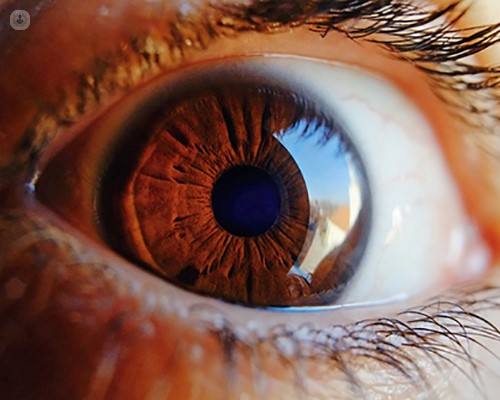Saving sight: A guide to retinal detachment
Escrito por:The human eye is an intricately designed organ, enabling us to perceive the world around us. One crucial component of vision is the retina, a thin layer of tissue located at the back of the eye that captures light and sends visual information to the brain. However, certain conditions, such as retinal detachment, can pose a significant threat to this vital sensory function.
In his latest online article, Dr Peter Cackett gives us his insights into retinal detachment. He talks about the causes, symptoms, diagnosis, treatment, recovery and prognosis and preventive measures.

What is retinal detachment?
Retinal detachment occurs when the retina, typically attached firmly to the back of the eye, separates from its normal position. This separation disrupts the blood supply to the retinal cells, leading to potential vision loss if left untreated.
Causes
Various factors can contribute to retinal detachment. A primary cause is a break or tear in the retina, often due to aging, trauma, or existing eye conditions. Conditions like high myopia (severe near-sightedness), previous eye surgery, or a family history of retinal detachment can increase the risk.
Symptoms
Recognising the symptoms of retinal detachment is critical in seeking timely medical intervention. Symptoms may include the sudden appearance of floaters (tiny specks drifting across the field of vision), flashes of light, and a curtain-like shadow over the visual field. Some individuals describe these symptoms as seeing cobwebs or flashes of lightning in their peripheral vision.
Diagnosis
If experiencing any of these symptoms, immediate consultation with an ophthalmologist is crucial. The eye specialist will conduct a comprehensive eye examination to diagnose retinal detachment. This may involve dilating the pupil for a better view of the retina, as well as using various imaging techniques such as ultrasound or optical coherence tomography (OCT).
Treatment
Early detection significantly improves the chances of successful treatment for retinal detachment. The approach to treatment often depends on the severity and type of detachment.
Laser or freezing treatment (Photocoagulation or Cryopexy): Small tears or holes in the retina can be treated with these techniques, which help to reattach the retina to the back of the eye.
Scleral buckling: A common surgical procedure where a flexible band is placed around the eye to counteract the force pulling the retina out of place.
Vitrectomy: This involves the removal of the vitreous gel inside the eye to relieve tension on the retina, followed by the insertion of a gas or silicone oil bubble to push the retina back in place.
Recovery and prognosis
The recovery process after retinal detachment treatment varies for each individual. Patients often need to limit physical activity and may have restrictions on posture, especially after gas bubble insertion. It's essential to follow the doctor’s instructions diligently for optimal recovery. The prognosis for retinal detachment depends on various factors, including the extent of detachment, its location, and how promptly treatment is sought. Timely intervention significantly increases the chances of preserving vision.
Preventive measures
While some risk factors for retinal detachment, like age and family history, are beyond our control, preventive measures can still play a role. Regular eye exams, especially for individuals with a higher risk, can aid in early detection and timely intervention.
Dr Peter Cackett is a distinguished ophthalmologist with over 25 years of experience. You can schedule an appointment with Dr Cackett on his Top Doctors profile.


